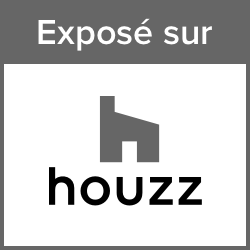2017 Architecture design competition for the extension and security update and reorganization of the parts of the Natural History Museum(Geneve, France)
Client: Geneve City
Team: Atelier mfmaarch
Mission: Architecture design for the extension, security renewal and reorganization of the parts of
the Museum of Natural Science
Total Floor Area: Extension 1,973m2, Renewal 4,214m2
Global cost: CHF 36millions
Status: Design Competition
Year: 2017
Location: Geneve, Switzerland
-Quality of the spatial location within the existent park environment.
It is highlighted that this transformation is much discussed in relation to the historical problem and the particular place of the site which is worth the preservation:
In addition, a function of the museum of natural and human science is to preserve many solid elements of the human history and natural science of the epoch
concerned and
the sense of the modern elements which the existing ones hold with them.
· General architectural and structural qualities of the project;
· General functional qualities of the project and consistency of flow management for the redevelopment of existing buildings;
Dry collections and alcohol collections in an existing building are well classified floor to floor and thus newly created collections assign their organizations and functional positions to those of the existing building predetermined by the competition program to connecting bridges between these two buildings, which results in close and horizontal displacements, efficient and well protected for the materials of the collections
In addition, the plan is clearly configured by net surface areas and those of the service core.
The former frame all the net parts of allocated rooms whilst the later ones are for all the spaces of the service core.
Corridors of the horizontal circulation in each floor of the new building are well led within and to the existing one of the same collection, which drastically reduces the vertical circulation of different and delicate collections on the floor upstairs and between a new building and an existing one, thus, a long vertical transport go and return for various collections.
In addition, all traffic trajectories are planned in consideration of the accessibility for disabled and elderly people as well as youngsters, which is endowed with chair and sofas around waiting lounges for elevators.
The elevated ground floor with more than 5m height makes easy for delivery trucks move to and park in premises and gives a sense of spaciousness on the ground floor.
The structural span is 6mX12m supported by large structural hollow section steel columns and H section steel beams, which is embedded into slabs to gain floor-to-ceiling height of 2.9m.
In all floors, spaces below ceiling and above floor are dedicated to the installation of equipment, which allows a replacement and a maintenance as well as quick and easy inspection without construction, resulting in a sustainable building.
Structural meshes on the floor can reinforce loaded parts of heavy-duty collection materials by increasing the number of small beams crossing between large beams or enlarging the section profile for use.
Furthermore, structural braces can easily locate in the longitudinal and cross-sectional sides and
All that is above mentioned will contribute to the understanding and the implementation of the problems of collection management related to accidents and major risks with compartments of both vertical and horizontal spaces, floor to floor in account of the proximity of functions between the new and existing building.
The building of the exhibition is renovated around the traffic and means of evacuation very attentively and improved with the plan of development of each program.
- Inner space qualities
Spaces of net surface areas widely serve to preserve valuable collections more for museum researchers and museum workers than for outside visitors
in the usual reception with necessity to maintain the thermal environment and lighting at the optimal level and obviously against fire and fire accident.
Specifically, illumination control glass windows, vertical louvers with electrical control, and reflective shelves are devices that allow to do all this with calm and tranquillity in there.
By the way, window panes produce opaque (white) to transparent which is very naturally changing cloud created by the penetration of the sun ray to shade.
All this will create a very ecological and scientifically artistic scene towards visitors deploying in there as well as museum researchers and museum
workers alike.
The nature of a new building is challenging the installation of HVAC equipment and fire-fighting measures.
In addition to the layout plan, the facades and exterior faces of the new building are coordinated with stone cladding of the white colour adjusting to those of the existing building which has been preserved for a very long time.
The building of the exhibition is renovated and aims at a utilization of contemporary taste of ribs and organic form with digital signage by maintaining most of the interior.
 atelier mfmaach
atelier mfmaach























































